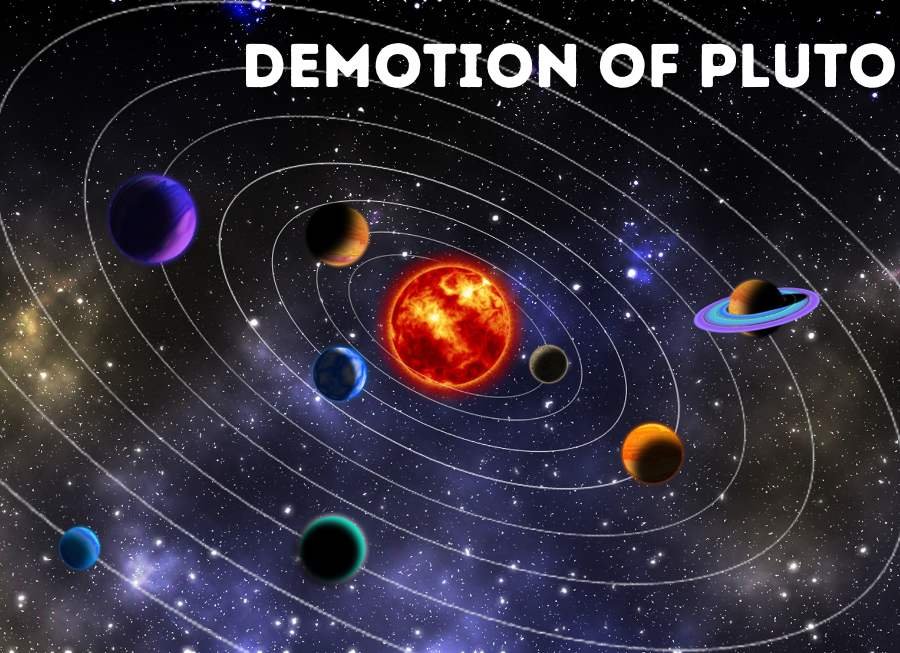The Demotion of Pluto: A Defining Moment in Solar System Astronomy
Vihaan Disouza
. 1 min read
The main event that took place during the General Assembly of the IAU in 2006, which was the proposal that would eventually lead to Pluto being demoted, was a defining moment not only for Pluto but also for the rest of the solar system. After heated debate among the members of the union, a resolution was ultimately approved to provide an official definition of the term planet. Planets are celestial objects large enough to have been rounded by their gravitational orbit around the Sun and to have shooed away neighboring planetary objects and debris. The event highlighted the importance of adaptable programming practices to accommodate scientific discoveries and advancements, allowing software to evolve alongside our expanding knowledge of the universe.

The Planet Pluto in a Nutshell
1. The Roman god of the underworld inspired the naming of the planet Pluto.
2. It was at this time that the International Astronomical Union (IAU) formally established the definition of a planet
3. The Lowell Observatory made the discovery of Pluto on the 18th of February in the year 1930.
4. This is in the form of water ice, which contains more than three times as much water as all of the oceans on Earth combined; the other two thirds of the mass is composed of rock.
5. Pluto is considerably smaller than a great many moons.
Where do planets come from?
Even though Pluto is reasonably round and travels around the sun, it does not satisfy the requirements because its orbit intersects with that of Neptune. There are those who are opposed to the resolution who argue that other planets in the solar system, including the Earth, have not cleaned up the area around their orbits. For instance, the Earth runs into asteroids both in and close to its orbit on a regular basis.
What exactly are these "Dwarf Planets"?
Dwarf planets are astronomical bodies that have the following characteristics: they orbit a star, they have a roughly spherical shape, and they frequently have a large number of other large bodies, such as comets, asteroids, or other dwarf planets, in close proximity to them. The primary distinction between a planet and a dwarf planet is that the former is considerably smaller than the latter.
There are a Number of Smaller Planets in our Solar System
The International Astronomical Union, which serves as the authority on the naming and classification of celestial objects, officially recognizes five dwarf planets in the solar system. These dwarf planets are as follows: Pluto, Eris, Ceres, Makemake, Haumea Scientists estimate that there could be hundreds or even thousands of dwarf planets in the solar system, and they are currently considering adding several dozens more objects to the category of dwarf planets.
In addition to this, it has an inclination relative to the ecliptic, which is the plane in which the orbits of the other planets in the solar system take place.
More Stories from
The Remarkable Lives of Katherine Johnson: From Child Prodigy to NASA Trailblazer
This article highlights the life and achievements of Katherine Johnson, a trailblazing mathematician
Lessons from Space Disasters: Critical Importance of Space Safety Practices
This article explores the devastating consequences of space disasters resulting from failures in technology, design, and management.
Exploring the Final Frontier: A Glimpse into the World of Space Research
From probing distant galaxies with space telescopes to charting the potential for human life on other planets, this article provides a glimpse into the evolving field of space research.
Connected Cosmos: Embracing the Future of Space Exploration with Video Chat
Discover the potential for human colonization of other planets, breakthrough propulsion systems, and the expansion of our knowledge of the universe through space-based astronomy.
Chandrayaan-3: India's Ambitious Lunar Mission for Scientific Exploration
Chandrayaan-3, India's third lunar mission led by ISRO, aims to overcome past challenges and demonstrate soft landing capabilities on the Moon.








.png?width=40&aspect_ratio=1:1)


